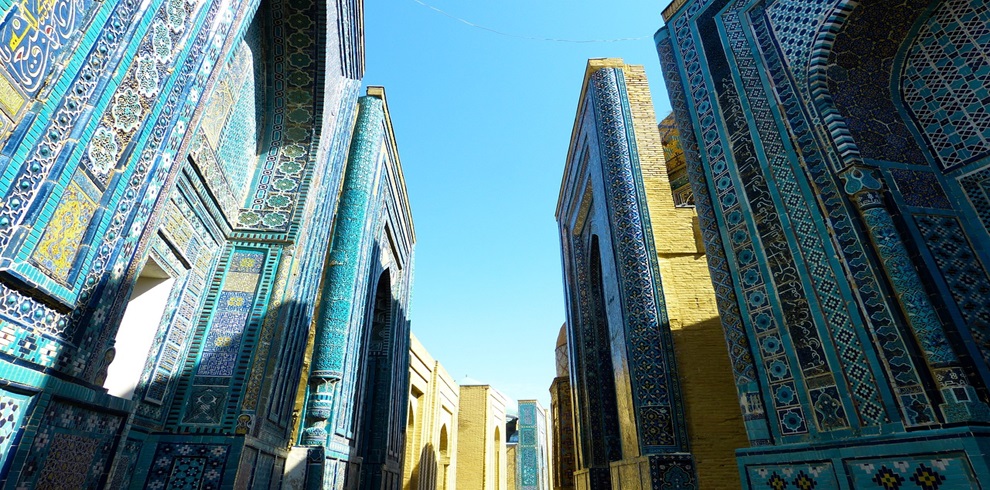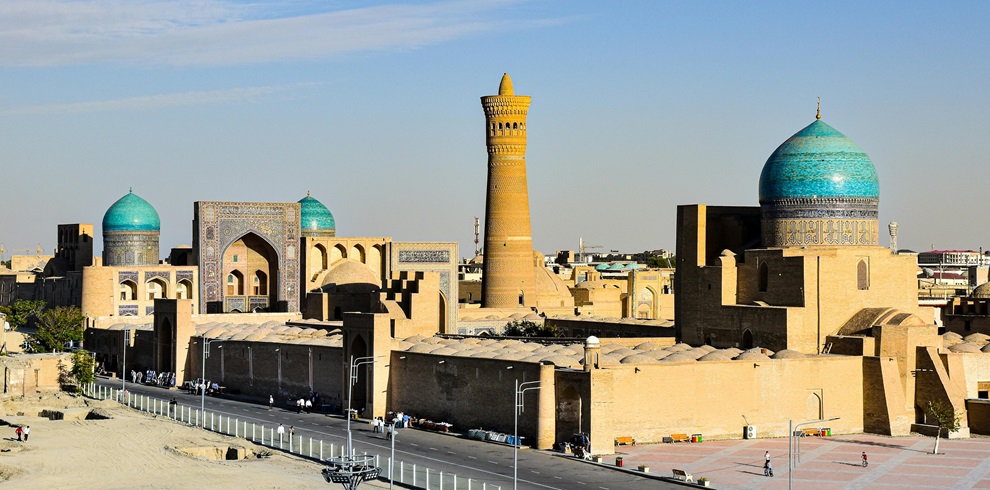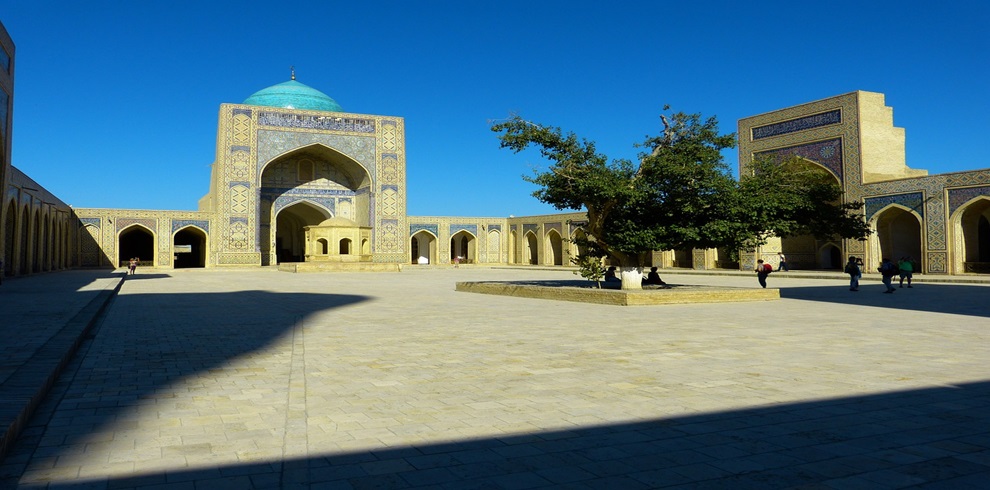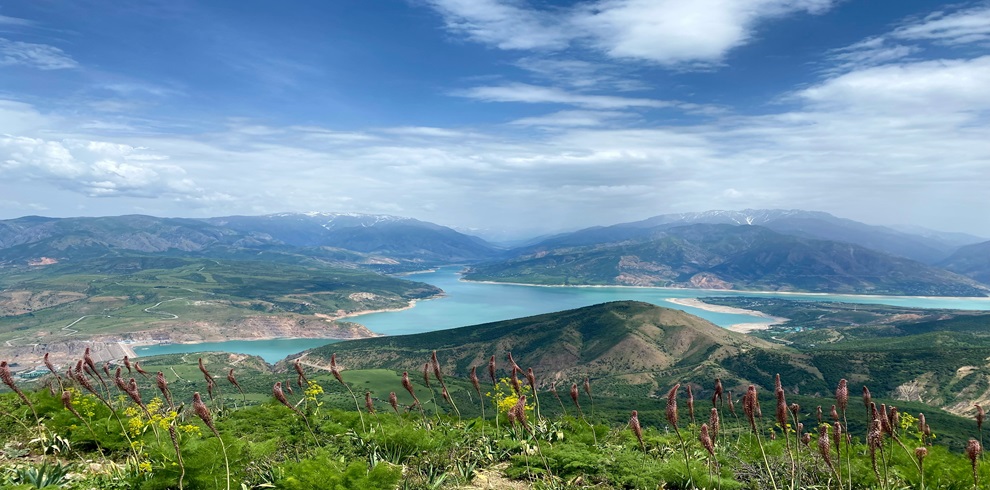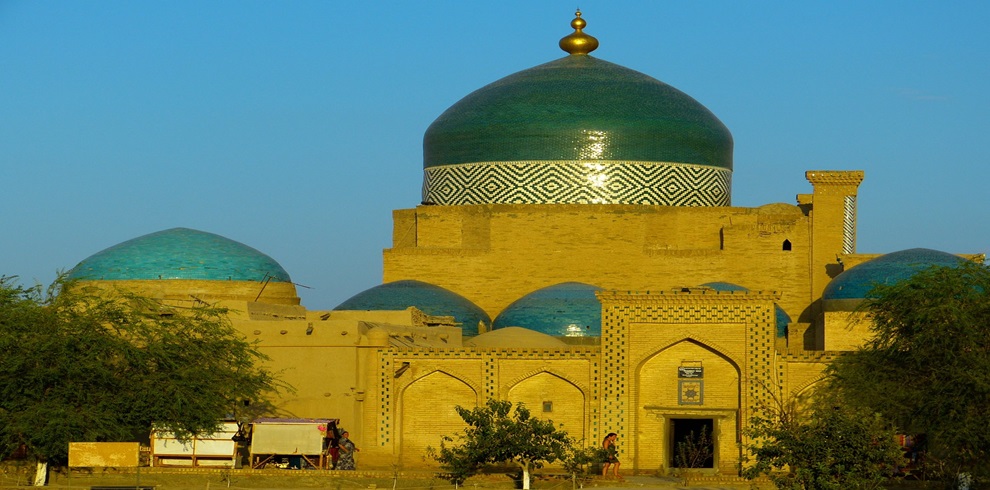Samarkand
Samarkand is one of the oldest cities in the world, founded, according to archaeological data, in the middle of the 8th century BC. e. (Ancient Marakanda), capital of the Timurid state, became the first capital of Soviet Uzbekistan in 1924. For more than 2 millennia, the city was a key point on the Great Silk Road between China and Europe, as well as one of the main centers of science in the medieval East.
In the 14th century it was the capital of the Tamerlane Empire and the Timurid dynasty. The vast majority of the city’s architectural masterpieces were built during this era, as well as during the era of the Uzbek Janid (Ashtarkhanid) dynasty. This was the period of the highest development of Samarkand.
In 2001, the city and its historical architectural and archaeological monuments were included in the UNESCO World Heritage List under the title “Samarkand – Crossroads of Cultures”.
- Registan Square (XV-XVII centuries) – is one of the most beautiful squares in the world, it is called the pearl of Central Asia, surrounding it on three sides in the form of a beautiful architectural ensemble: Ulugbek Madrasah (1417-1420), Sher-Dor Madrasah (1619 -1636) and the Tillya-Kari madrasah (1646-1647). This ensemble is considered the greatest among the buildings of the Islamic world.
- Bibi-Khanum Mosque (1399-1404) – The scale with which this monumental structure was built, striking in its size and beauty, is breathtaking. In ancient times, its dome was compared to the vault of heaven, and the arch of the portal – to the Milky Way.
- Siab Bazaar (closed on Mondays) – is the largest shopping center in Samarkand. Here you can find national bread, fruits, vegetables, sweets and much more
- Observatory of Ulugbek (1428-1429) – The scientific works of Ulugbek were created thanks to the unique observatory that he erected in Samarkand. The main stationary instrument was a giant quadrant placed inside a cylindrical building with a diameter of 48 m.
- Necropolis Shahi-Zinda (XIV-XV centuries) – Harmoniously intertwined into a living and moving composition, mausoleums from different periods are closely grouped along a narrow medieval street. Shahi-Zinda consists of eleven mausoleums, which were built one after another in the 14th and 15th centuries. But the main mausoleum, where the necropolis begins, is considered to be the imaginary grave of the Prophet Muhammad’s cousin, Kusam Ibn Abbas. They called him “Shahi Zinda”, which translated from Persian means “Living King”.
- Mausoleum Gur-Emir (XV century) – the tomb of Amir Timur and the Timurids. This majestic complex consisted of a khanqah, a madrasah of Muhammad Sultan – the grandson of Amir Timur, and the later tomb of Amir Timur himself and his descendants. Subsequently, Gur-Emir served as a prototype for famous architectural monuments of the Mughal era: Humayun Mausoleum in Delhi and the Taj Mahal in Agra, built by the descendants of Timur, who ruled in Northern India.
- The Afrosiab Museum (1970) is a museum in Samarkand dedicated to the history of the founding of the city. The museum is located in the northern part of Samarkand behind the central bazaar, next to the hills of the ancient settlement of Afrosiab.
- Tomb of St. Daniel (1900, but the grave was a long time ago) – There is hardly a place in the world where Muslims, Christians and Jews would come to pray. The sprawl of the building is directly related to the tombstone, which is 18 meters long.
- Konigil is a village where you will be able to observe the process of making Samarkand paper from mulberries using ancient technology.
Cultural Tours
Uzbekistan cultural tours introduce you to the different regions and traditions of Uzbekistan, and take you deeper into the history and beauty of this great country. Go beyond the program of a regular group tour and explore the architectural monuments of Uzbekistan’s greatest cities, plus the workshops of master craftsmen and the kitchens of talented chefs.
Each region in Uzbekistan boasts of a unique culture and architectural style, plus different spices in their cuisines and patterns on their textiles and pottery. For example, Khiva is most famous for its ancient technologies for creating hand-dyed natural carpets from silk and wool, while Bukhara has been home to master metalworkers for centuries. In Samarkand, visit the monumental architecture of Timur’s capital, or explore the patterns used for suzani, traditional hand embroideries. Head to the Fergana Valley to learn how ikat patterns are woven in silk, or visit Kashkadarya to learn about the basma and iroqi weaving styles that adorned the clothes of ancient rulers. For those who love ceramics, a visit to Rishtan, the home of famous blue ceramics, is a must.
Take your time in museums, historical sights, folklore fairs, and festivals. Bring back not only colorful souvenirs and bright photos, but also new impressions and memories of the unique culture and history of this land.
- Jan
- Feb
- Mar
- Apr
- May
- Jun
- Jul
- Aug
- Sep
- Oct
- Nov
- Dec
- Jan
- Feb
- Mar
- Apr
- May
- Jun
- Jul
- Aug
- Sep
- Oct
- Nov
- Dec
- Jan
- Feb
- Mar
- Apr
- May
- Jun
- Jul
- Aug
- Sep
- Oct
- Nov
- Dec
- Jan
- Feb
- Mar
- Apr
- May
- Jun
- Jul
- Aug
- Sep
- Oct
- Nov
- Dec
- Jan
- Feb
- Mar
- Apr
- May
- Jun
- Jul
- Aug
- Sep
- Oct
- Nov
- Dec
- Jan
- Feb
- Mar
- Apr
- May
- Jun
- Jul
- Aug
- Sep
- Oct
- Nov
- Dec
- Jan
- Feb
- Mar
- Apr
- May
- Jun
- Jul
- Aug
- Sep
- Oct
- Nov
- Dec
- Jan
- Feb
- Mar
- Apr
- May
- Jun
- Jul
- Aug
- Sep
- Oct
- Nov
- Dec
- Jan
- Feb
- Mar
- Apr
- May
- Jun
- Jul
- Aug
- Sep
- Oct
- Nov
- Dec
Gastronomic tours
A gastronomic tour to Uzbekistan with excursions takes place in the main tourist cities – Samarkand, where the Macedonian heritage has been preserved, Bukhara, where they will tell about the cheerful adventures of the cunning Khoja Nasreddin, the “cradle” of the pottery art of our country – Gijduvan and the small town of Vabkent with the minaret of the same name, which challenged “elder Bukhara brother” Kalyan. Each city represents a specific milestone in the history of Uzbekistan – a history as old as the world.
A culinary tour to Bukhara and Samarkand is a way of re-reading the heritage of Asia, honored to be included in the UNESCO World Heritage List. In addition to the Registan of Bukhara – yes, don’t be surprised, in ancient times there was a “registan” – that is, the main city square was present in every eastern city, visits to family in Gijduvan, where the ancient secrets of making ceramics are passed down from generation to generation, and visits to the Tamerlane mosque – Bibi Khanym , on a gastronomic tour of Uzbekistan in 5 days you will experience the true “Taste of the East”.
Combine the “Classical Uzbekistan” excursion tour with knowledge of the cultural layer inherent in the culinary traditions of the Uzbek people. The guides specialize in receiving guests from Russia and will tell the history of Uzbekistan with parallels to the events that took place in Rus’ at that time.
Excursions in Bukhara, due to the walking distance of the main attractions, are on foot, in the fresh air, so by the time of lunch, after a satisfied hunger for impressions and new knowledge, you will have a lion’s appetite.
We promise that traditional dishes with interesting gastro excursions will produce no less effect than the delight caused by the architectural masterpieces of Samarkand and Bukhara:
1. Bukhara kazan-kabob is a classic piece in the music of Uzbek cooking, prepared from steamed lamb, rich in spices.
2. Tasting lagman in Bukhara will appeal to those who love meat and seasonal vegetables cooked over a fire.
3. In Samarkand you will try Uzbek shish kebab and pilaf. Why here? There are 100 types of pilaf in Asia. Samarkand residents have found 99 types of cooking kebabs – here you will find your favorite variety and discover new shades of taste. By the way, about pilaf – 100 varieties and the gastronomic tour program includes Samarkand pilaf, laid out in layers.
4. Manti is a favorite holiday dish of Uzbek families, like pilaf and somsa, which are already popular far beyond Asia. See how culinary master Mubaro Sharipovna in the guest house makes a gossamer-thin dough that can hold a handful of meat filling, and of course, repeat this trick, which will further delight your guests.
5. Dimlyama in Uzbekistan is an unusual steamed stew of meat and vegetables, including tomatoes and eggplants, which is as satisfying as it is appetizing.
A gastronomic tour to Uzbekistan from Moscow involves not only tasting and contemplation, but direct participation in culinary master classes, where local residents will tell you secrets and tricks that cannot be found on the Internet.
Uzbek cuisine owes its complexity and richness to nomadic traditions and, of course, to the Great Silk Road – a fusion of the early Middle Ages, transforming and enriching itself over the centuries. The preparation of Uzbek dishes is characterized by ritualism – we will tell you why on Thursdays in Uzbekistan everyone eats pilaf, and only men should cook it.
- Jan
- Feb
- Mar
- Apr
- May
- Jun
- Jul
- Aug
- Sep
- Oct
- Nov
- Dec
- Jan
- Feb
- Mar
- Apr
- May
- Jun
- Jul
- Aug
- Sep
- Oct
- Nov
- Dec
- Jan
- Feb
- Mar
- Apr
- May
- Jun
- Jul
- Aug
- Sep
- Oct
- Nov
- Dec
- Jan
- Feb
- Mar
- Apr
- May
- Jun
- Jul
- Aug
- Sep
- Oct
- Nov
- Dec
- Jan
- Feb
- Mar
- Apr
- May
- Jun
- Jul
- Aug
- Sep
- Oct
- Nov
- Dec
- Jan
- Feb
- Mar
- Apr
- May
- Jun
- Jul
- Aug
- Sep
- Oct
- Nov
- Dec
- Jan
- Feb
- Mar
- Apr
- May
- Jun
- Jul
- Aug
- Sep
- Oct
- Nov
- Dec
- Jan
- Feb
- Mar
- Apr
- May
- Jun
- Jul
- Aug
- Sep
- Oct
- Nov
- Dec
- Jan
- Feb
- Mar
- Apr
- May
- Jun
- Jul
- Aug
- Sep
- Oct
- Nov
- Dec
Hiking
Embark on an extraordinary journey that delves deep into Uzbekistan’s treasures, offering thrilling trekking, hiking, and cultural tours. Step off the beaten path and immerse yourself in the heart of local life. With us, you’re not just a traveller; you become a part of the rich tapestry woven by local communities. You’llexplore remote villages, connect with locals, live alongside families, and partake in everyday moments that provide profound insights into the culture.
For adventurers seeking to traverse timeless landscapes, our multi-day hiking and trekking expeditions departing from Tashkent, Samarkand, Bukhara, and beyond are a gateway to a thrilling adventure. Roam through rugged terrains and follow trails that unveil the hidden gems of Uzbekistan’s natural beauty. This is more than a physical journey; it’s an opportunity to uncover the land’s history, diverse cultures, and its warm-hearted people. Rest assured that each step is guided by experienced professionals, accompanied by comfortable accommodations, and meticulously crafted itineraries to make your exploration smooth and seamless.
These are not your typical tours; they are experiences that offer you a unique chance to view Uzbekistan through the eyes of those who proudly call it home.||
- Jan
- Feb
- Mar
- Apr
- May
- Jun
- Jul
- Aug
- Sep
- Oct
- Nov
- Dec
- Jan
- Feb
- Mar
- Apr
- May
- Jun
- Jul
- Aug
- Sep
- Oct
- Nov
- Dec
- Jan
- Feb
- Mar
- Apr
- May
- Jun
- Jul
- Aug
- Sep
- Oct
- Nov
- Dec
- Jan
- Feb
- Mar
- Apr
- May
- Jun
- Jul
- Aug
- Sep
- Oct
- Nov
- Dec












